Santander provides a slice of urban seaside life, with bustling bodegas and beaches. It is not the most beautiful of cities - a huge fire raged through the centre back in 1941, leaving little that's old or quaint. But Cantabria's capital, founded by the Romans as Portus Victoriae (Victory Harbour) in 21 BC, makes the most of its setting along the northern side of the handsome Bahia de Santander, and proved a lively place to kick-start our time in northern Spain.
Having landed at the airport named after Santander's favourite son, the late great Seve Ballesteros, we quickly adopted the Spanish lifestyle by falling asleep for a few hours in the afternoon (it was an early start!) at Alberto's converted loft apartment which was well-located in the city just up from Plaza de Canadio which brims with bars
. Alberto's apartment was a real gem of a find - spotless, we had the whole place to ourselves for the time we were there, the only hazard being the ceiling which was low and sloped in places.
We managed to get in a visit to Catedral de la Asuncion when we arose from our siesta before Mass. Santander's cathedral is composed of two Gothic churches, one above the other, with a beautiful cloister off the 14th-century upper church. We strolled through the pretty Jardines de Pereda, named after the Cantabrian writer Jose Maria de Pereda, and back along the bayfront promenade and failed to miss the imposing 1875 Banco Santander building, with the arch in the middle. This grand building was probably completed in quicker time than the Centro Botin will be - a contemporary arts and cultural centre which is being constructed (very slowly) opposite.
On our full day in Santander, we decided to take a walk along the coast making our first stop the Museo Maritimo del Cantabrico, a museum covering all facets of Cantabria's relationship with sea, and a small aquarium on the bottom floor
. The 60-tonne whale skeleton was probably the star attraction. We then headed to the Peninsula de la Magdalena, beautiful headland parklands crowned by the Palacio de la Magdalena which was built between 1908 and 1912 as a gift from the city to the royal family, which used it every summer until 1930. From the outside it's an eclectically styled building but unfortunately we were unable to get inside due to a conference. After seeing some seals get fed in a somewhat uncomfortable feeding session, we rounded the headland with some lovely views towards Playa del Puntal, a finger of sand jutting out across the bay toward Santander. We finally arrived at Playa del Sardinero, a glorious ocean-facing sandy sweep backed by some of Santander's most expensive real estate, including the Gran Casino. Here Sam indulged in his latest Regma - the beloved local ice cream, sold in immense scoops around town.
Other culinary highlights in Santander included La Conveniente - a cavernous bodega with high stone walls, wooden pillars and packed with wine bottles
. We squeezed into the tramlike enclosure at the front and gorged on big platters of local cheeses and chorizo. Rabas (deep-fried squid) is the tapas speciality of Santander. The baked octopus with potato mousse was a little more delicate!
Not wishing to miss out on any 'top sights' and slightly resentful about possibly losing a day to travel and relaxation in our next destination, Los Picos de Europa, we got ourselves up early (well 7.30am!) and caught the first bus of the day to Santillana del Mar (40mins). From here we walked 2km to the Cueva de Altamira, the home of Spain's finest prehistoric art, discovered in 1879 by Cantabrian historian and scientist Marcelino Sanz de Sautuola and his young daughter. Unfortunately by 2002 Altamira had attracted so many visitors that the cave was closed to prevent deterioration of the art, but a replica cave (the 'Neocueva') in the excellent museum now enables everyone to appreciate the inspired, 13,000- to 35,000-year-old paintings
. Most of the images depict wild animals such as horses, deer, bison and mammoths. Getting a close-up understanding of this incredible work, created by hunter-gatherers living an arduous existence during the last Ice Age was truly awe-inspiring.
Annoyingly we had to return to Santander before carrying on in the same direction to our next destination in Los Picos. With infrequent buses we found ourselves with a bit of time to have a wander around the bright cobbled streets and tanned stone and brick buildings of Santillana del Mar, which was an absolute joy! This medieval gem is in a perfect state of preservation as a result of strict town planning rules introduced back in 1575. The Colegiata de Santa Juliana, a lovely 12th-century Romanesque ex-monastery, is commanding at the end of Santillana's cobbled main street but unfortunately we did not have enough time to see its biggest drawcard, the cloister.
Back in Santander, we picked up our bags from Alberto's and after a quick Racion de Rabas and Cana (small beer) close to the Banco Santander arch, we caught another bus to Potes (via Santillana!) - 3hrs. Connected to Espinama - 30mins.
More than just a bank...
Monday, August 03, 2015
 Santander, Cantabria, Spain and Canary Islands
Santander, Cantabria, Spain and Canary Islands
Other Entries

 Santander, Cantabria, Spain and Canary Islands
Santander, Cantabria, Spain and Canary Islands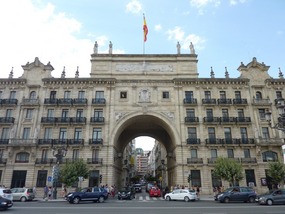
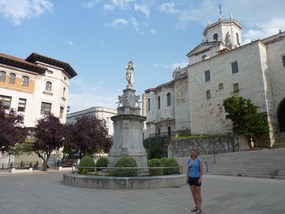

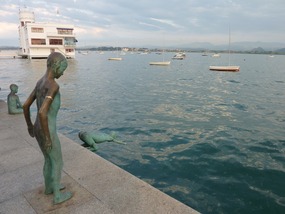

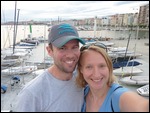
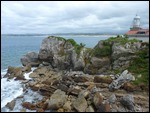
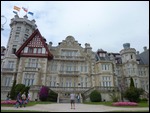

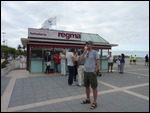
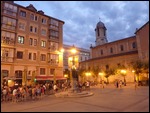
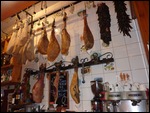
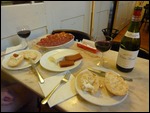

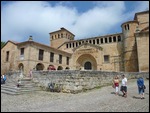
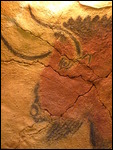
2025-05-23